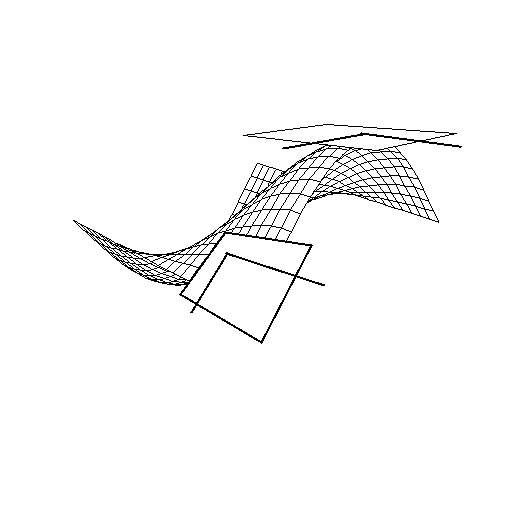To get a first order approximation to a function f(x,y) we use a similar idea. However, a linear function in two variables is a plane. Thus, we need to relate the constants in the equation of a plane:
z = m(x - x0) + n(y - y0) + d
to the function that is being approximated. In order for this plane to touch the graph of f(x,y) at (x0,y0,f(x0,y0)) the constant d must be equal to f(x0,y0). The slope of the plane in the x and y directions must e equal to the slope of the function in the x and y directions. Thus, we have the linear approximation to a function of two variables as![]()

There is another version of this formula which is commonly seen. By rearranging the terms, we get
![]()
![]()
![]()